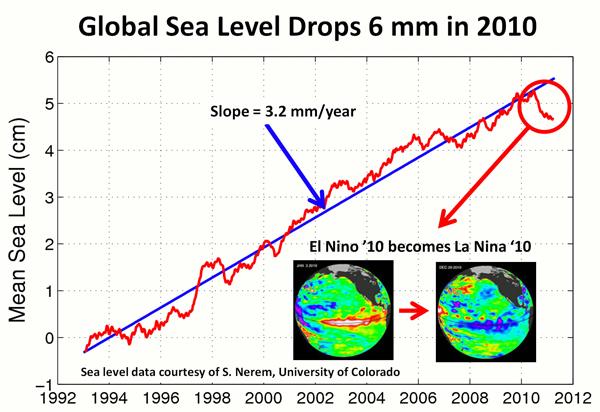Sea Levels Declined Over Last Year


Earth's seas have been rising gradually with the influence of climate change, but over the past year, this rise hit something of a pothole, with a temporary dip linked to the El Niño-La Niña cycle and all the rains that have poured onto the planet's continents.
For the past 18 years, the U.S./French Jason-1, Jason-2 and Topex/Poseidon spacecraft have been monitoring the gradual rise of the world's oceans in response to global warming. This rise is caused both by the expansion of the ocean's waters as they warm up, and by the melting of glaciers and ice sheets.
Most of the time, this rise is a steady one, but between last summer and this one, global sea level actually fell by about a quarter of an inch (about half a centimeter).
El Niño, La Niña
The shift from an El Niño pattern (where waters over the eastern Pacific Ocean are warmer than normal) to a ((CONLINK|30556|La NiÃ
Get the world’s most fascinating discoveries delivered straight to your inbox.



